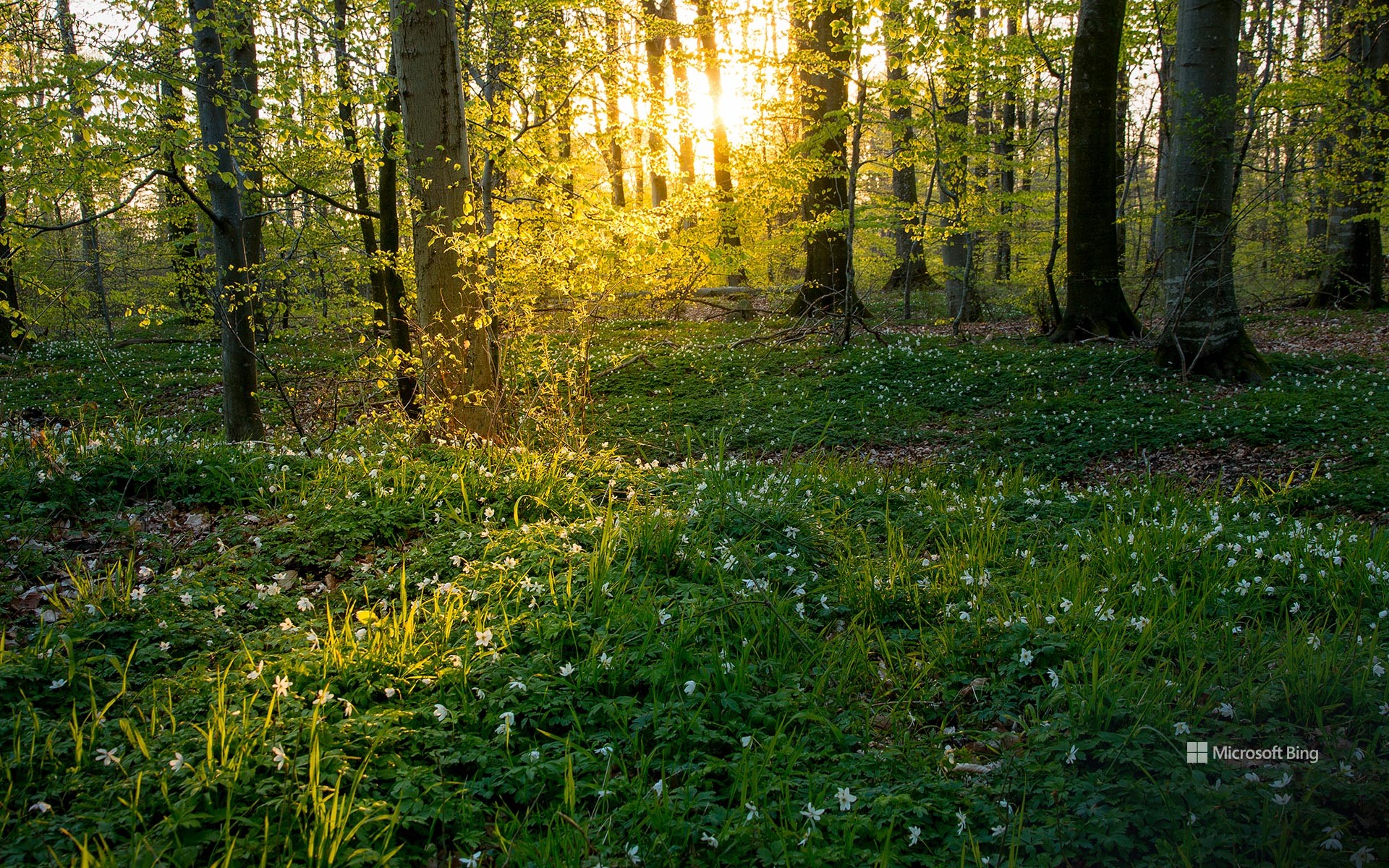日德兰半岛的山毛榉树和野生海葵 ,丹麦 Beech trees and wild anemones, Jutland, Denmark (© Nick Brundle Photography/Getty Images)

日德兰半岛的山毛榉树和野生海葵 ,丹麦 Beech trees and wild anemones, Jutland, Denmark (© Nick Brundle Photography/Getty Images)
一缕阳光下的林地 Beneath a ray of light
日德兰半岛的山毛榉树和野生海葵,丹麦
今天,图片上的风景将我们带到了丹麦的日德兰半岛。随着春天的到来,这片北方的土地展现出了一种属于山毛榉树的绿色色调,而山毛榉树正是丹麦的“国树”。对于丹麦人民来说,这些正在发芽的山毛榉树是一种独特的存在,在四五月份,他们会把树上的嫩叶采摘下来用于烹饪中,尤其是用在沙拉中。过去,欧洲人经常使用山毛榉树光滑的树皮来书写文字。这也是为什么,在现代荷兰语中,"书籍"一词直接翻译为"山毛榉树"。当阳光穿过森林中的树冠照耀下来时,野生海葵用白色的花瓣点亮了林地,它们代表着精致之美和真诚纯粹,曾在莫奈和梵高等艺术家的杰作中“担任主角”。
Beech trees and wild anemones, Jutland, Denmark
Today's homepage takes us to Jutland, Denmark, where the arrival of spring showcases the green hues of the European beech, a national symbol of this northern land. The young leaves of these budding trees are significant to the Danish people, as they are harvested from April to May and used in cooking—particularly in salads. In the past, Europeans would often use the smooth bark of beech trees for writings texts and the word 'book' is thought to be derived from the word for 'beech.' As the sun shines through the forest canopy, wild anemones brighten up the woodland with their white petals. These blooms, representing delicate beauty and sincerity, have even starred in masterpieces by artists such as Monet and Vincent van Gogh.
评论已关闭